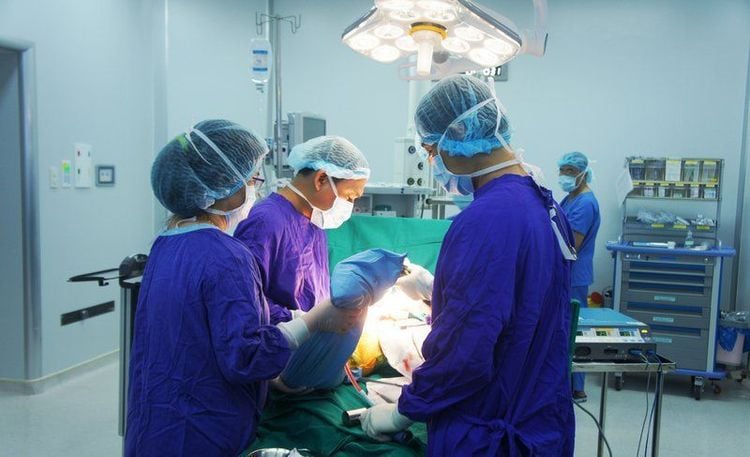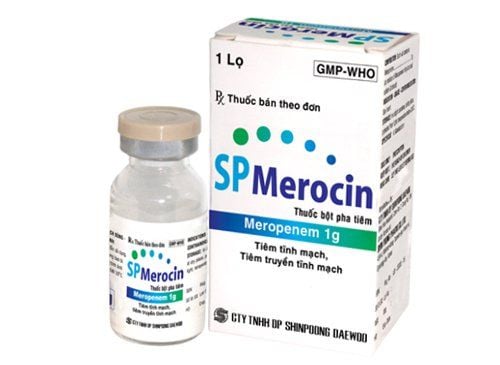This is an automatically translated article.
Fournier's syndrome is a rapidly progressive infection that destroys tissue in the genitals and surrounding areas. Fournier's disease is extremely dangerous with a high mortality rate - up to 30%.
1. What is Fournier's disease?
Fournier's syndrome is an infection of the genitals, causing necrosis of this site and the surrounding area: the tissue in this area will die or die due to the infection. Fournier's gangrene is often associated with infection of the scrotum (including testicles), penis, etc. in men, and infection of the perineum in women.
Fournier's disease is relatively rare and is more common in men than women, especially men between the ages of 50 and 60. Statistically, the proportion of men with Fournier syndrome is 10 times higher. compared to women. The disease is extremely rare in children.
2. What symptoms does Fournier syndrome cause?
Symptoms of Fournier's disease often begin with a general feeling: unwell. Symptoms may include:
Discomfort Swelling and pain in the genital area

Các triệu chứng của bệnh Fournier thường bắt đầu từ cảm giác đau vùng sinh dục chung chung
Initially, these symptoms are tolerable for the patient, but over time, the condition will get worse. Not only pain, swelling and inflammation of the genitals, but this part can also have a bad smell due to dead tissue cells.
3. What causes Fournier's disease?
Fournier gangrene is usually caused by one of three to four different types of bacteria. The common feature of these bacteria is that they have the ability to damage blood vessels, cut off blood that nourishes cell tissues, and produce toxins and enzymes that destroy tissue.
Usually, infections caused by Fournier's syndrome do not harm the muscles. This infection can start from a wound in the skin caused by trauma or surgery. In women, Fournier's syndrome is more likely to occur in the perineum due to miscarriage, abortion or hysterectomy ...
Fournier's disease can also occur in children in cases such as:
Circumcision Obstruction of the inguinal hernia Due to insect bites or other infections... Along with that, some of the following factors can increase the risk of Fournier's:
Have been or are being treated with immunosuppressive drugs Due to lupus Crohn's disease HIV infection Chemotherapy Long-term treatment with corticosteroids Liver disease Malnutrition Severe obesity Advanced age Alcoholism...

Béo phì có thể gây bệnh Fournier
4. Is Fournier's disease dangerous?
Fournier syndrome is a rare condition (less than 0.02% of the population), but can be life-threatening. It is estimated that between 20% and 40% of people with Fournier's gangrene have died. In particular, the older the patient and the more health problems he has, the more likely he is to die with Fournier's syndrome. The next Fournier disease can produce a host of serious complications. This process includes:
A serious infection that spreads to tissues deeper in the uterus, also called endometritis. Inflammation leads to the formation of blood clots, tissues gradually lose their blood supply and die. The death of cell tissue will release bacteria as well as toxic products into the bloodstream, leading to an inflammatory response and septic shock, making the body unable to maintain blood pressure, organs start to stop working. , and eventually death. Therefore, treatment of Fournier's syndrome needs to be initiated as soon as possible to prevent the infection from becoming more serious.
5. How is Fournier's syndrome diagnosed?
Fournier's disease will be diagnosed in turn through the following process:
Doctors will conduct a physical examination, medical history... to estimate the potential risks of the disease. Next, the patient will need to provide a specimen (infected tissue sample) and this sample will be sent to the laboratory for examination. The test technician will identify the bacteria and look for additional signs to rule out other infections. In addition, blood tests may also be conducted. Imaging techniques: Next, the doctor will ask the patient to perform imaging tests to accurately diagnose Fournier syndrome. These tests may include X-rays, ultrasounds, CT scans, MRI scans, etc.
6. Current treatments for Fournier syndrome

Phẫu thuật điều trị bệnh Fournier
Currently, most treatments for Fournier's disease usually aim to remove the infected tissue and limit the spread of these infections.
Oxygen Therapy Hyperbaric Oxygen Therapy is a method of exposing a patient's body to an abundant source of Oxygen (up to 100%) compared to the normal amount of Oxygen in the air which is about 21%. This oxygen supply will inhibit the growth of bacteria and infectious agents, limit blood vessel damage and promote wound healing.
However, until now, Hyperbaric Oxygen therapy is still a controversial issue, so this method has not been officially put into treatment in medical facilities.
Surgery Surgery is almost the only effective treatment for Fournier syndrome. With surgery, doctors will try to completely remove the infected cell area, minimizing the removal of healthy skin and tissue. After surgery, patients can undergo skin grafting or plastic surgery to regenerate damaged tissue.
Thus, it can be concluded that Fournier's syndrome is a dangerous disease that needs to be treated early if you want to preserve life and health.
Vinmec International General Hospital with a system of modern facilities, medical equipment and a team of experts and doctors with many years of experience in medical examination and treatment, patients can rest assured to visit. examination and treatment at the Hospital.
Please dial HOTLINE for more information or register for an appointment HERE. Download MyVinmec app to make appointments faster and to manage your bookings easily.
References: medicalnewstoday.com, healthline.com
SEE MORE
Hellp syndrome in obstetrics Learn about HELLP syndrome in pregnant women with pre-eclampsia Anesthesia endotracheal anesthesia cesarean section in patients with the syndrome HELLP













